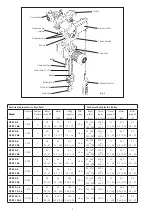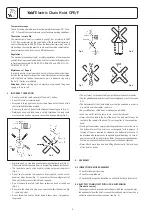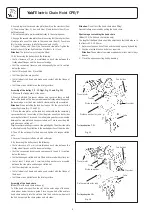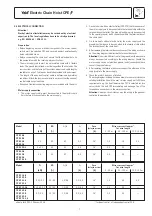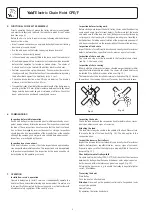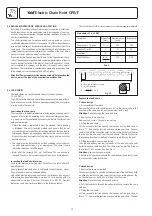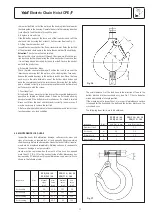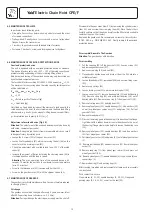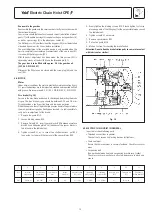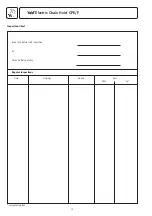
Electric Chain Hoist CPE/F
9
Electric trolley:
By operating the
resp.
-button.
For trolleys with two speeds: The fi rst stage of button depression activates
the slow speed., further depression activates the fast speed. Use the
slow speed for short periods only.
When moving the trolley consider the stopping distance. Do not use the
beam end stops as operational limit devices.
Attaching the load
Attach the load to the hoist using only approved and certifi ed slings or
lashing devices. Never use the load chain as sling chain. The load must
always be seated in the saddle of the hook. Never attach the load to
the tip of the hook. Do not remove the safety latch from the load hook.
Lifting/lowering the load
The load is lifted by depressing the
- button, it is lowered by depres-
sing the
- button. For hoists with two speeds: The fi rst stage of button
depression activates the slow speed, further depression activates the
faster speed. In order to raise the load, always use the lowest available
lifting speed. The chain must be loaded at this speed and may not lie
slack on the fl oor. The slow speed may only be used for short distances.
The chain end stop may not be used as operational limit switch (see Fig.
1). Use the slow speed for short periods only. Do not use the chain end
stop as operational limit device.
Emergency stop
All movement can be immediately halted by depressing the red,
mushroom shaped button on the pendant control.
Attention:
Operating the red emergency button does NOT automatically disconnect
the mains supply to hoist or trolley.
To release the emergency stop, rotate the button in an clockwise direction.
8. SERVICE
• Service and inspections may only be carried out by a competent person.
• The inspection must determine that all safety devices are present
and fully operational and covers the condition of the hoist, lifting gear,
accessories and supporting constructions.
• The service intervals and inspections noted are for normal working
conditions. Adverse working conditions, e. g. heat or chemical envi-
ronments, can dictate shorter periods.
• The Yale electric chain hoist CPV/F conform to FEM group 1 Am in
accordance with FEM 9.511. This results in a theoretical service lifetime
of 800 operating hours under full load.
• This is equivalent to 10 years under normal operating conditions. After
this period the hoist requires a general overhaul. Further information
is contained in BGV D6 resp. FEM 9.755.
Attention:
Maintenance work requires subsequent function testing with
nominal load.
8.1 DAILY CHECKS
1. Visually check the pendant control switch and cable for damage.
2. Function test of brake
3. Function test of end limit switch
4. Electric chain hoists with trolley:
• Check that the trolley runway is free from obstructions
• Check that the end stops on the trolley runway are fi tted and secure.
Initial checks
Periodical checks
Inspection and Maintenance
during
after 50
after 200
after 200
commis-
operating
operating daily operating
annually
sioning
hours
hours hours
Lubricate load chain
•
•
•
•
Pendant control and support wire
•
•
•
Check oil level
•
•
•
Function test of brake
•
•
Function test of end limit switch
•
•
Function test of overload device
•
•
Electrical installation and power supply
•
•
Check for wear in chain drive
•
•
•
Inspect chain bolts for cracks
•
•
Inspect suspension bracket and load hook for cracks and deformation
•
•
Check screwed connections for tightness
•
•
Inspect trolley components for cracks and deformation
•
•
Oil
change
• •
Inspect motor and transmission of hoist
•
Inspect motor and transmission of trolley
•
Adjustment
of
overload
device
•
Adjustment
of
brake
•
Lubricate
geared
trolley
drive
•
Summary of Contents for CPEF
Page 15: ...Electric Chain Hoist CPE F 15...
Page 16: ...Electric Chain Hoist CPE F 16...
Page 17: ...Electric Chain Hoist CPE F 17...


